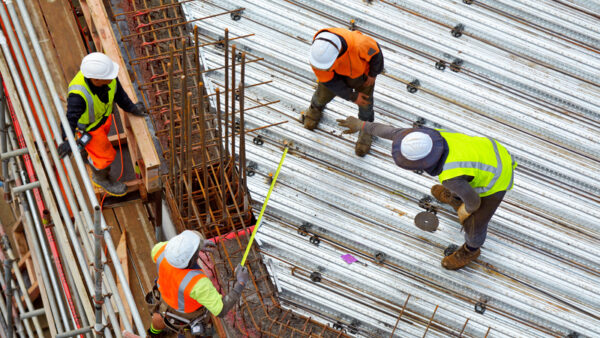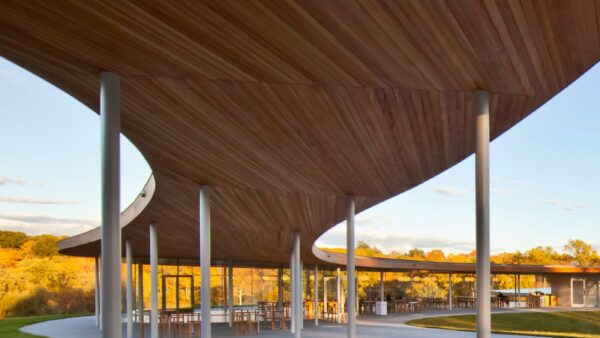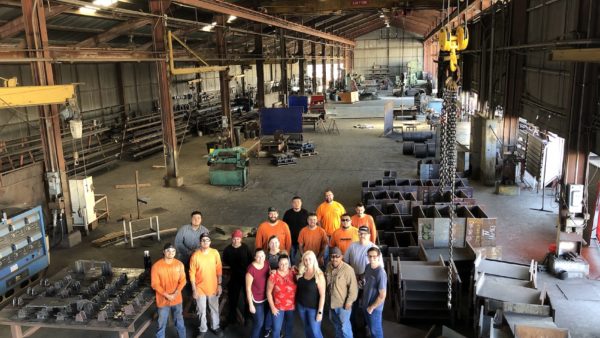7 May 2014

Dr Craig Jones, director at Circular Ecology, is a carbon footprint expert. He is the creator of a leading embodied carbon database known as the ICE database, and provided the data to footprint the construction of the London 2012 Olympics.
Buildings contribute more greenhouse gases than trucks and cars. With energy demand in the buildings sector set to double by 2050, carbon footprint expert Craig Jones asks how real emissions reductions might be possible.
The Intergovernmental Panel on Climate Change (IPCC) recently released its fifth assessment report on climate change (AR5).This long awaited report revealed that in 2010 the world’s man-made greenhouse gas emissions (GHGs) were 181% of 1970 levels. In fact, emissions over this 40-year period were responsible for half of all CO2 emissions since 1750. Â
Such trends are clearly a cause for concern, but what contribution has the building sector made to this increase and what role does it have to play in the future?
In China the construction sector consumes around half of the world’s steel and cement and employs 37 million people– Dr Craig Jones
In 2010, which is the latest data from the AR5 report, the building sector was responsible for 19% of the world’s GHG emissions. That’s a bigger contribution than transport makes (14%).
On top of that, the building sector accounted for 32% of the world’s energy use and around a third of ‘black carbon emissions’, which are emissions from fossil fuels.Â
Furthermore, the IPCC projected that by 2050 energy demand in the building sector will double and CO2 emissions will increase by somewhere between 50-150%. Clearly, this can’t be allowed to happen if we are to limit the impacts of global warming to within sustainable levels.
What can we do? This growth in energy demand will arise from things we normally think of as “good” – higher living standards in the developing world, more access to electricity, lifestyle changes, adequate housing, and urbanisation.
And, to a large extent, what we’re building now, we’re stuck with: the IPCC authors note the “significant lock-in risks” associated with the long lifespans of buildings and infrastructure.
These risks are pronounced in regions with high construction rates, such as China, where the construction sector consumes around half of the world’s steel and cement and employs 37 million people – 23% more than the entire working population of the United Kingdom.Â
There is good news, however. The opportunities to improve are significant with recent advances in technologies, improvements in know-how and the adoption of new policies.Â
Call for codes
For new buildings, the IPCC states that adopting very-low-energy building codes works, and has progressed substantially since its last report, AR4, published in 2007.Â
Retrofit also forms a key part of the mitigation strategy, particularly in developed countries where reductions of 50-90% in heating and cooling loads have been achieved.Â
The IPCC notes further that recent large improvements in performance and costs make very-low-energy construction and retrofits economically attractive, and can sometimes even be achieved at net negative costs.
Behaviour change is also noted as important, where similar buildings can operate with up to a five-fold difference in energy use.
In fact, lifestyle and behavioural change could reduce energy demand by 20% in the short term and as much as 50% by 2050 – although naturally it should be noted that lifestyle and behaviour change is not an easy task, particularly in the short to medium term.
There are also wider benefits of energy efficiency and GHG emissions reduction, including reductions in operating costs, improvements in energy security, health, environmental impacts, workplace productivity, fuel poverty reductions and net employment gains. These gains could be particularly valuable in developing economies.Â
However, as we know too well, there are many barriers in the building sector. Even when the business case is strong rapid market uptake is by no means guaranteed and, historically, has been slow.Â
Barriers include competing incentives (such as those of tenants, owners and builders), highly fragmented markets, and a shortage of skills, access to information and to financing. These have severely hindered the uptake of even the most cost-effective opportunities.Â
A diverse range of measures is needed. There is an important role for retrofit, which would require strong and new incentives, for demand side measures, switching to cleaner fuels and energy reduction through behaviour change.Â
But perhaps the most important thing is for policy makers around the world to be bold and to implement strong building codes. This, the IPCC says, has been shown to work. This would finally allow for a more rapid market uptake of energy and GHG saving technologies, which will be a key factor in reaching our ambitious, but necessary, climate goals.
Visit: www.circularecology.com
Comments
Comments are closed.











Comment
Nice summary, but readers would be well advised to download the report and study its findings. True, the report is supportive of implementing building codes, but doing this in isolation will not address this complex issue, as evidenced by the zero carbon hub and research around part L. They are certainly not a “cure-all’. Education is perhaps the greatest barrier and the area with greatest opportunity, not just apprenticeships but active construction professionals and practitioners. Technology is moving apace and balancing this with an effective regulatory regime needs both sides of the enforcement / industry lobby to work together.